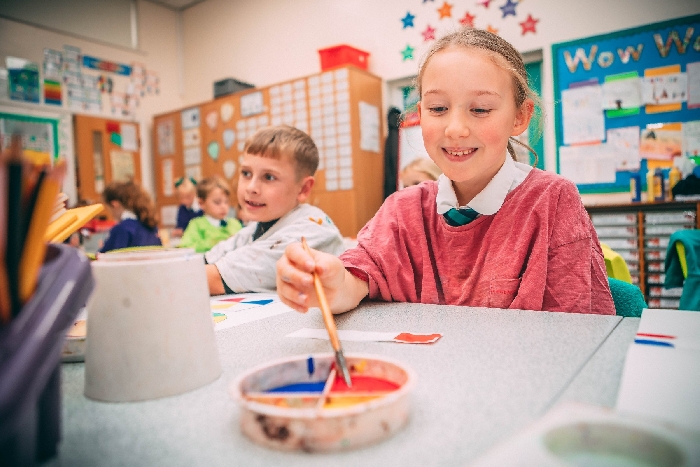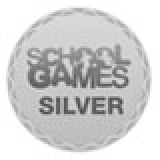Art & Design
Subject Leader: Miss Bracken
Within art at Airedale Junior School, it is our aim that all children have the opportunity to explore their own creativity and individuality. We aim to provide a high-quality art education, which will engage, inspire and challenge pupils, equipping them with the knowledge and skills to experiment, invent and create their own works of art, crafts and design.
The Primary Objectives of teaching Art at Airedale Junior School are:
- To provide a broad and balanced range of art activities.
- To raise standards in art so that every child makes best progress.
- To show children’s progress of art skills through the work produced.
- To expose children to a wide range of artists from different cultures, valuing and celebrating diversity and awareness of cultural influences.
- To raise and develop children’s self-esteem through class and group activities and individual work.
- To give children the freedom to explore and create their own work, celebrating their individuality.
- To ensure equal opportunity – all children are provided with equal access to the Art curriculum.
The Airedale Art Curriculum
Our curriculum is skills and knowledge based, including full coverage of the National Curriculum which meets the needs of all Airedale Infants and Junior pupils. This takes into consideration the school setting, local, national and international developments.
Our pupils are offered a very wide range of experiences within the curriculum to extend their understanding of themselves and the world in which they live. The children develop skills, attitudes, and values to enable them to become lifelong learners and equip them for the future. The ability to learn is underpinned by the teaching of basic skills, concepts, and values. There should be no limits to curiosity, and we instil a thirst for new experiences and knowledge.
We actively promote British Values and Social, Moral, Spiritual and Cultural differences. We also provide opportunities for our pupils to learn about the contribution of Britons to innovation, excellence and changes in the world.
The Curriculum has been organised into topics which are a vehicle to promote our school values and curriculum drivers, and allow for the development of skills and understanding within and across the subjects. Our curriculum topics allow the teaching of threshold concepts that are the fundamental ‘learning elements’. These concepts are built upon and developed within the year, across the year and over the course of the school experience.
Adaptive teaching (aka agile teaching) recognises: individual needs; the need for varied and additional resources; when, where and how additional support can be facilitated; and how children learn best. Teachers must plan lessons so that all pupils can study every national curriculum subject and experience success against age-appropriate expectations and/or their own bespoke personal targets

Art links closely to our school drivers and our TRUST values of Ambition, Bravery and Respect underpin our school ethos. Children are introduced to a wide variety of artists and designers who are ‘Famous in the Field’ within the units they study, in order for them to raise their aspirations. We understand that our children need to become more resilient and braver in their choices, art promotes this by encouraging children to make independent choices and instilling them with the belief that everyone’s artistic pieces are unique and valued. Children are encouraged to discuss where their artistic creations can be improved in a respectful way, enabling them to build a fundamental skill which can be used later in life.
Oracy and communication are fundamental skills that we believe equip our children to be life-long learners. Art supports this aim by children being able to respectfully discuss their pieces and articulate their evaluation process to one another. Our pupils understanding that their voice is a vital tool required for supporting and developing one another’s work is crucial to aid success and promote the use of technical vocabulary. The vocabulary taught in art is carefully chosen and progressive across units of work, which we expect children to know, understand and apply in context.
Being independent and fostering a love for learning is crucial in our school. Our children need to develop enquiring minds and investigate with their pieces, which again is linked to resilience. Developing creativity is a vital life skill, which will equip them to be lifelong learners. Our art curriculum develops the creative, technical and practical expertise needed to be innovative designers.
How do we ensure progression of knowledge and skills?
At Airedale Junior School, we have in place, for each subject area, a knowledge and skills progression document, which is used for planning, to ensure sequenced and appropriate content for specific year groups. Teachers are clear on the learning and expectations for each year group, as this has been carefully selected and mapped out so that children are building on prior knowledge and skills each term and each year. Whenever possible, we teach through a themed approach, to enable our children to embed and revisit learning, make connections and develop a greater depth of understanding within the subject. The content is chosen in order to make effective links with key cross-curricular themes, reflect expectations in the National Curriculum programmes of study and engage and inspire children’s curiosity and interest in art.
Ultimately, our curriculum is designed to ensure that pupils know more and remember more, through the use of progressive skills. Within these documents there are opportunities for differentiation, in order to meet the needs of all learners.
How is the subject taught?
When children are in art lessons, they are explicitly told that they are going to be ‘artists.’ They are then reminded of the key skills that they will learn, use and develop within this subject, specifically linking to their prior learning.
The knowledge content is carefully selected and skilfully taught alongside the key skills and artistic concepts, which are threaded throughout the curriculum. This allows children ample opportunities to revisit, reinforce and embed learning.
Within each unit of study, children are exposed to differing artists and then taught specific skills which can be used within their pieces. This enables the children to further develop and deepen their knowledge and understanding of differing art skills whilst driving their own learning forward through their own creative pieces.
Within each art lesson, children are introduced to and reminded of key vocabulary, in order to promote oracy and language acquisition. Specific questioning is used to check children’s understanding and prior knowledge, before new concepts, skills or knowledge are introduced. Modelling is used by class teachers to clarify expectations, children are then given plentiful opportunities to consolidate, build upon and apply basic skills and knowledge, across a series of lessons, as well as across the year. Through studying a range of people from the past and present, who have had an impact on the world of art, as well as a range of countries and cultures, children are able to increase their cultural capital.
Look at what we have been up to in our lessons!
In accordance with the Key Stage 2 National Curriculum pupils should be taught to:
- develop their techniques, including their control and their use of materials, with creativity, experimentation and an increasing awareness of different kinds of art, craft and design.
- to create sketch books to record their observations and use them to review and revisit ideas
- to improve their mastery of art and design techniques, including drawing, painting and sculpture with a range of materials [for example, pencil, charcoal, paint, clay]
- about great artists, architects and designers in history
How do we know that our children are making progress?
Ongoing assessments of the children’s knowledge and skills are made by the class teacher. Misconceptions are addressed and next steps carefully planned. Children’s outcomes are compared to the subject specific skills and knowledge documents.
Subject leaders gather an overview of children’s outcomes in each subject area. This is used to plan appropriate next steps for their future learning, as well as provide an overview of learning within a subject area cross the whole school.
What wider opportunities are provided for our children?
In addition to discrete teaching in this subject, opportunities for art through additional enrichment and links with other subject areas, ensure that elements of the art curriculum are accessed by children throughout the year. Our children are able to increase their knowledge of artists through visits to the local galleries and studying work inspired by local artists.
Art: Further Information & Links:








